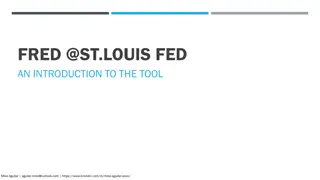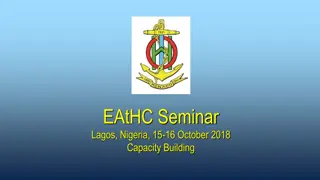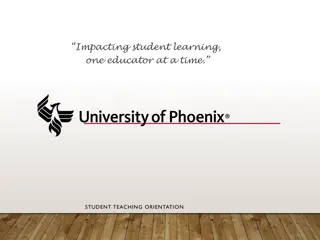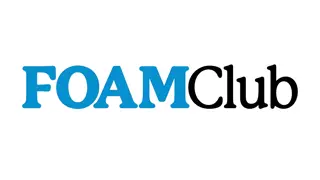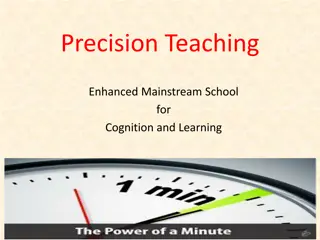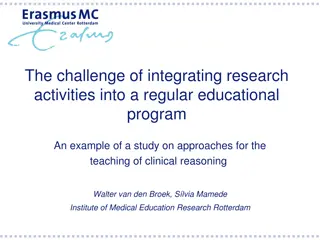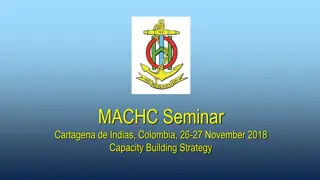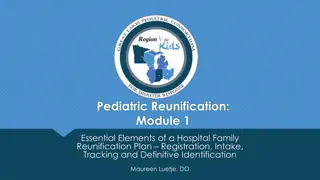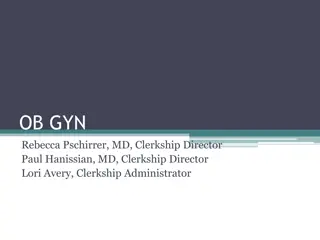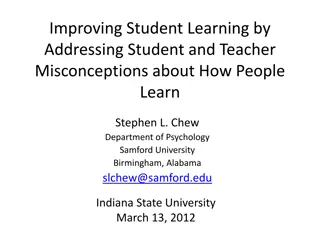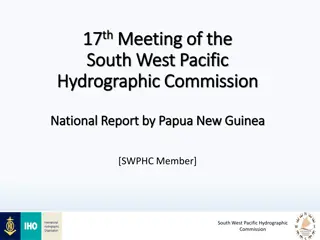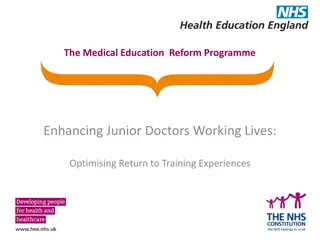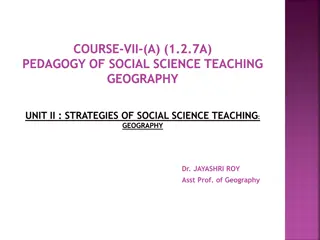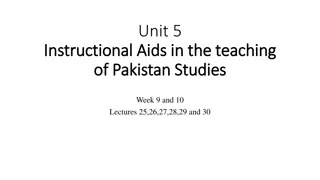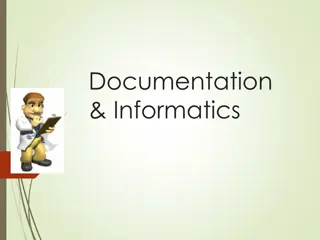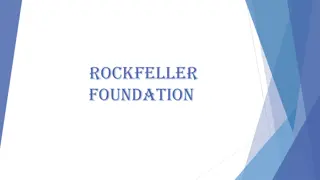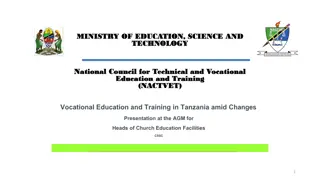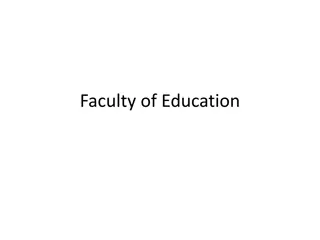Enhancing Medical Education Through Teaching Charting Approach
Teaching Charting brings together education and service, focusing on identifying benefits, defining the CHART approach, and practicing charting skills with medical students. This method provides hands-on clinical skills learning opportunities, enhances writing skills development, and offers tools for assessing electronic notes quality. The CHART approach emphasizes feedback on written work through comments, helping improve assessment resources and timing of follow-up.
Download Presentation

Please find below an Image/Link to download the presentation.
The content on the website is provided AS IS for your information and personal use only. It may not be sold, licensed, or shared on other websites without obtaining consent from the author. Download presentation by click this link. If you encounter any issues during the download, it is possible that the publisher has removed the file from their server.
E N D
Presentation Transcript
Teaching Charting Bringing Education & Service Together (BEST)
Learning Objectives By the end of this session, you will be able to: Identify the benefits of teaching charting Define the CHART approach Practice teaching charting to a medical student
Benefits of Teaching Charting Many medical students prefer to learn hands on clinical skills (history taking, physical examination, charting, procedures) from resident physicians rather than from faculty.1 1. Morrison EH, Hollingshead J, Hubbell FA, Hitchcock MA, Rucker L, Prislin MD. Reach out and teach someone: generalist residents needs for teaching skills development. Fam Med. 2002;34:445-450.
Benefits of Teaching Charting Medical school provides numerous teachable moments for students to learn writing skills. Once students become residents, they may be offered less feedback about charting, or they may be less inclined to use feedback that they are offered.
Benefits of Teaching Charting Published tools now exist for assessing the quality of electronic notes, including the Physician Documentation Quality Instrument (PDQI-9).2 2. Stetson PD et al. Assessing electronic note quality using the Physician Documentation Quality Instrument (PDQI-9). Appl Clin Inf. 2012;3:164-174.
The CHART Approach to Feedback on Written Work Comments Help Assessment Resources Timing of follow-up
COMMENTS Before meeting, read the learner s note and write comments on it. Include an adequate (but not overwhelming) level of detail. Writing down your comments will help organize your feedback and will later aid learner s recall.
HELP Establish mutual goals for this feedback session (learner s, yours). Clarify that you will focus on charting, not on clinical issues. Which writing skills may require extra help?
ASSESSMENT Discuss your mutual assessment of the written work. Start with the learner s self-assessment. Then give your assessment, balancing positive and negative attributes. Organize your feedback into logical sections to make it easier to follow. Involve the learner actively: can s/he learn from rewriting some text with you?
RESOURCES Discuss learning resources to improve charting skills: Online texts and other resources Other teachers Which resources does the learner think would be best for his or her learning preferences?
TIMING OF FOLLOW-UP When would the learner like to meet again to go over more written work?


